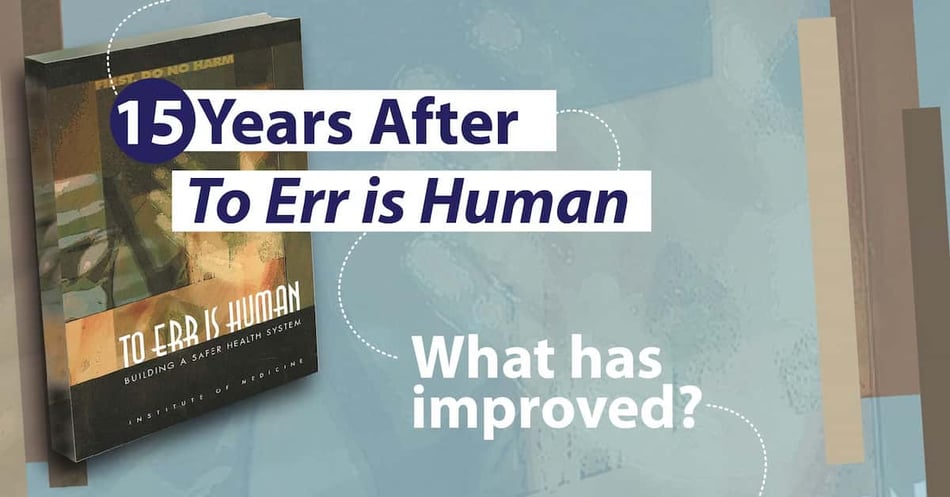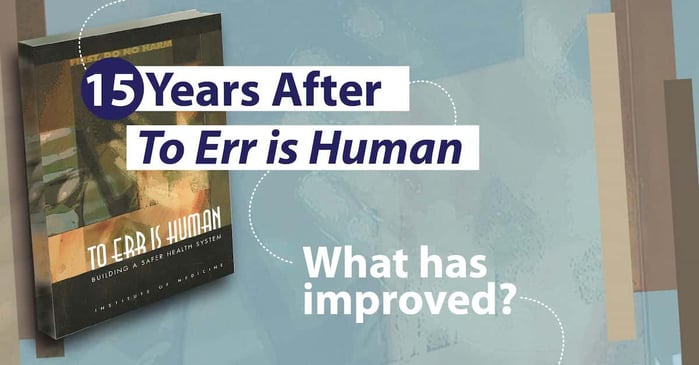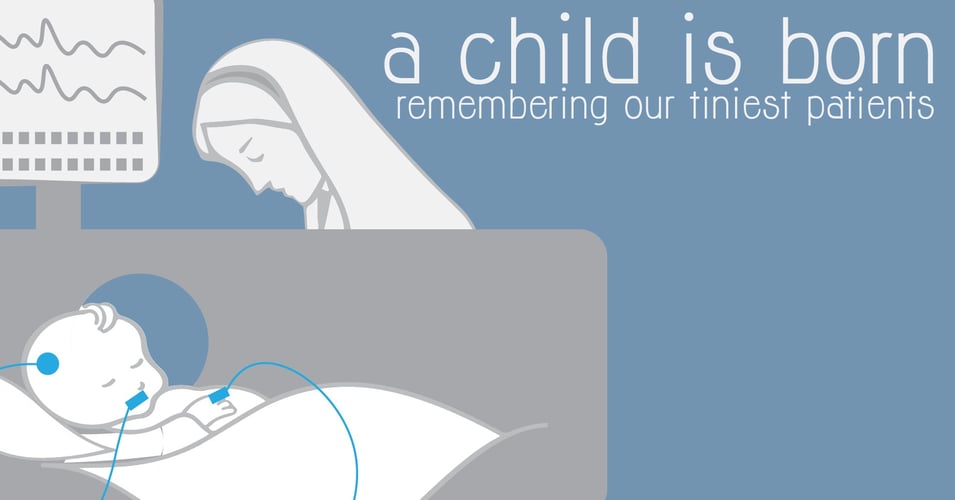15 Years After To Err is Human: What Has Improved?

 In late 1999, the Institute of Medicine published To Err is Human: Building a Safer Health System, a landmark report that brought the nation’s attention to the 98,000 deaths due to patient safety failures. Today we highlight two of the online resources released at the end of the 15th year of this report, where you can find updates on progress, analysis of best practices, and glimpses into the future of patient safety.
In late 1999, the Institute of Medicine published To Err is Human: Building a Safer Health System, a landmark report that brought the nation’s attention to the 98,000 deaths due to patient safety failures. Today we highlight two of the online resources released at the end of the 15th year of this report, where you can find updates on progress, analysis of best practices, and glimpses into the future of patient safety.
Free From Harm: Accelerating Patient Safety Improvement Fifteen Years After To Err is Human
The National Patient Safety Foundation convened an expert panel to evaluate the progress made in the past 15 years and identify the work being done to assure progress in the next 15 years. Their determinations focus on strong leadership, centralized oversight, common goals, increased funding, supported staff, patients, and families, and improved technology.
Fifteen years after To Err is Human: a success story to learn from | BMJ Quality & Safety
Peter J. Pronovost, from the Armstrong Institute for Patient Safety and Quality at Johns Hopkins Medicine, along with co-authors from the Agency for Healthcare Research and Quality and The Centers for Disease Control, highlight the improvements seen in CLABSI over the past 15 years as a basis for continuing to improve in all areas of preventable harm. The authors propose five elements led to the success in reducing CLABSI which could be used more generally. These elements are a reliable and valid measurement system, evidence-based care practices, investment in implementation sciences, local ownership and peer learning communities, and alignment and synergy efforts around a common goal and measures.
For more specifics, check out the CDC’s Healthcare-associated Infections (HAI) Progress Report, which shows how rates for CLABSI, SSIs, CAUTI, MRSA, and C. difficile rates have changed over the past few years.
And to review some of the other coverage of the improvements since To Err is Human from the past year, please follow these links:
With this increased attention, alongside improved processes and technology, the next 15 years will surely continue to progress towards eradication of preventable harm.
![EOScu Logo - Dark - Outlined [07182023]-01](https://blog.eoscu.com/hubfs/Eoscu_June2024/Images/EOScu%20Logo%20-%20Dark%20-%20Outlined%20%5B07182023%5D-01.svg)




